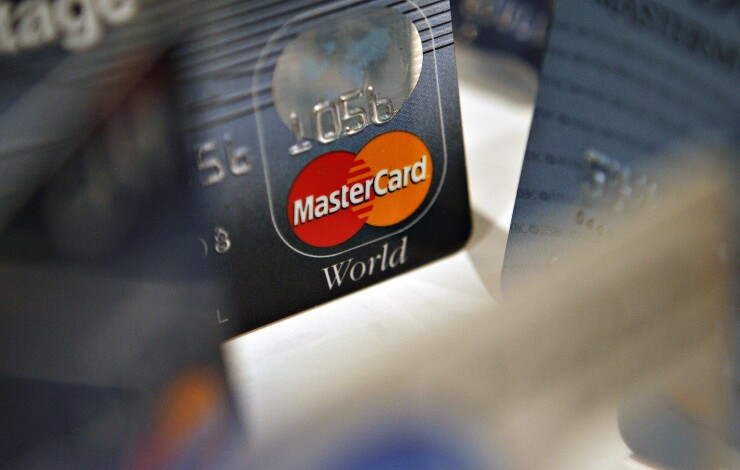In the push to get millions of cash-based micro- and small-business merchants to go digital, the two largest card networks are getting a boost from contactless payments' global surge.
The convergence of two trends — the pandemic causing consumers and merchants to turn away from cash and the ongoing expansion of contactless card penetration — is having a pronounced positive effect, according to both networks. Mastercard's Tap on Phone allows merchants to use a smartphone to accept contactless card payments without any add-ons.
Outside the U.S.,
Mastercard’s Tap on Phone technology is being piloted in 16 countries including in North America, and some of the use cases are surprising, according to Blake Rosenthal, Mastercard’s executive vice president and head of global acceptance.

“We’re seeing incredible demand for Tap on Phone in emerging markets, but outside of villages we’re also seeing unexpectedly high interest from larger merchants in cities where they’re using the technology for line-busting and serving people who are standing outdoors because of the pandemic,” Rosenthal said.
The recent second wave of lockdowns in Europe has driven further interest in Tap on Phone from large merchants.
“Large merchants who have customers waiting in line outside in winter, and are delivering services at curbside, are using Tap on Phone to increase transaction throughput,” Rosenthal said.
One obstacle that still remains is transactions that require a PIN, which tap-on-phone contactless payments don’t fully support yet, she said.
“If a bank requires a PIN to complete the transaction with Tap on Phone, there’s a workaround some acquirers provide, but next year we expect to see contactless acceptance come together with PIN acceptance on the smartphone,” Rosenthal said.
Mastercard also worked with local banks and acquirers to raise contactless payment limits in 80 countries when the pandemic struck and more payments shifted away from cash.
Another factor nudging adoption in this year’s Tap on Phone pilots was a software development kit Mastercard made available to ease the certification process for acquirers and processors, according to Rosenthal.
“Between acquirers and innovators we’re making rapid progress so we expect to see millions more merchants, large and small, accepting payments directly,” Rosenthal said.
Mastercard saw particularly strong success with Tap on Phone in Poland, she noted.
Contactless card penetration is among the highest in the world in Poland, where 87% of all payment cards are configured for NFC and most payment terminals are contactless-enabled.
Mastercard and Visa in 2017 collaborated with the Polish Banks Association and the Ministry of Entrepreneurship and Technology to create the Cashless Poland Foundation. That laid a foundation for increasing contactless payment awareness, and now many small merchants in Poland are accepting cards for the first time through Tap on Phone.
“We’re learning a lot from the pilots and next year we expect to see really broad adoption as contactless mobile devices become more of a permanent way of conducting business for consumers and merchants,” Rosenthal said.





